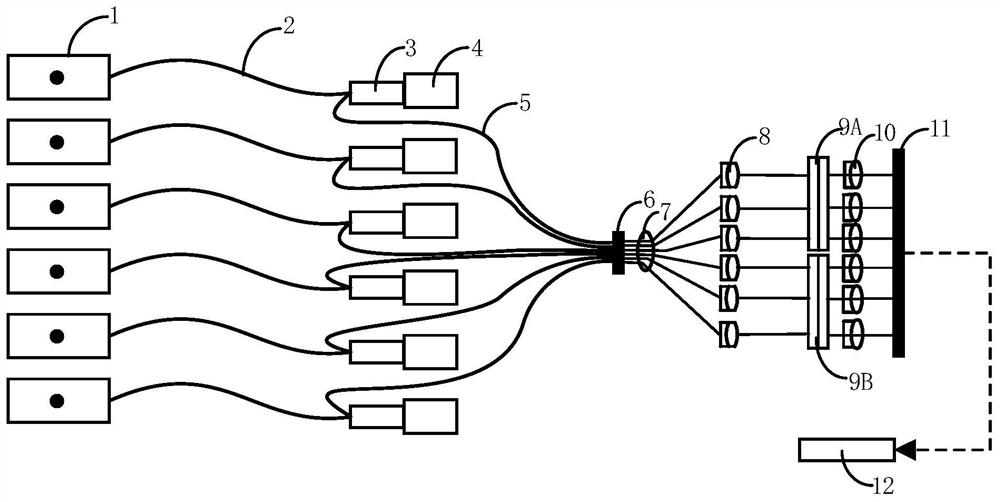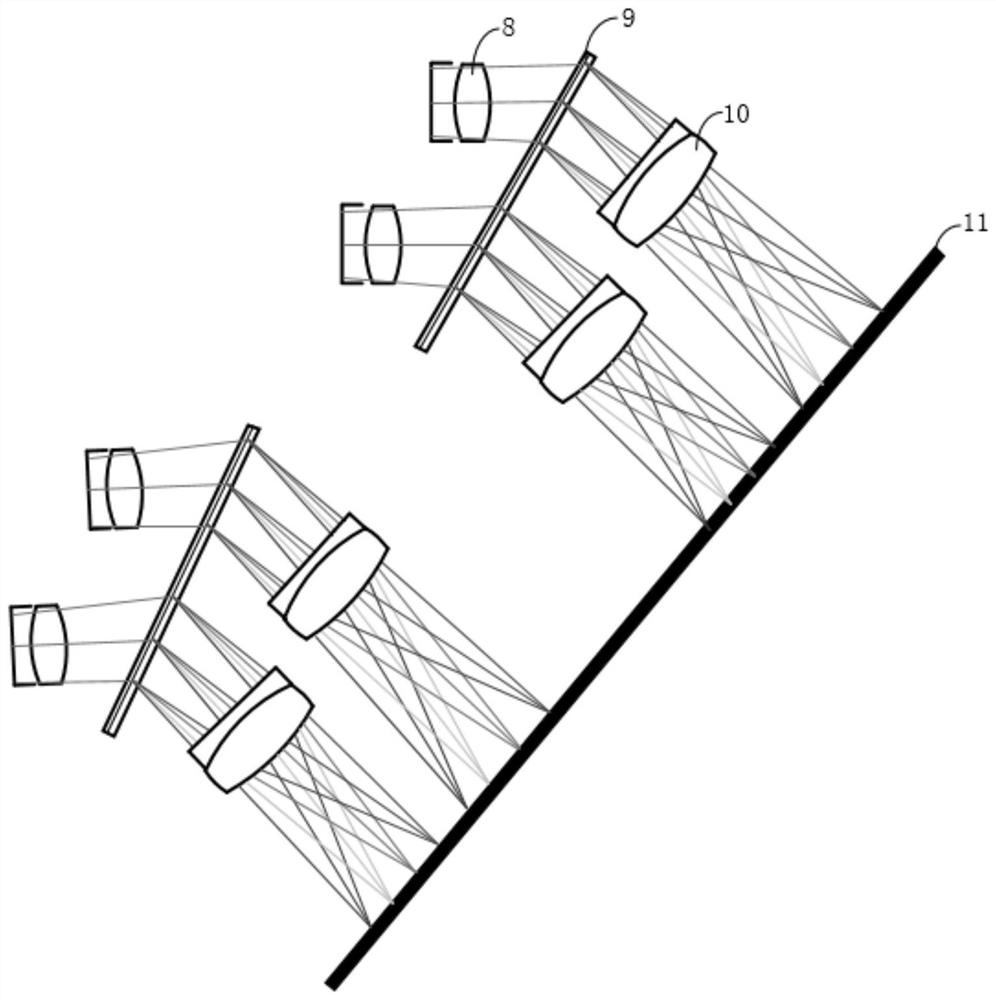Raman spectrometer system with dual-wavelength light source
A Raman spectrometer, dual-wavelength technology, applied in the field of optical detection, to achieve the effect of small instrument size, improve detection sensitivity and detection accuracy, and avoid beam crossing
- Summary
- Abstract
- Description
- Claims
- Application Information
AI Technical Summary
Problems solved by technology
Method used
Image
Examples
Embodiment 1
[0041] pass figure 1 A four-channel Raman spectrometer is set in the connection mode, wherein two channels are the Raman scattered light obtained by 532nm light source irradiation and finally projected on the CCD detector 11, and the corresponding pixel bits are [10,45] and [60,95] respectively; The Raman scattered light acquired by the other two channels irradiated by a 785nm light source is finally projected on the same CCD detector 11, and the corresponding pixel bits are [105, 140] and [155, 190] respectively.
[0042] Choice of two independent volume holographic transmission gratings:
[0043] 532nm laser grating: Raman shift is set to 200-4000cm -1 , 532nm converted into a frequency of 1 / 532nm = 18796.99cm -1 , the range of Raman scattered light is [18796.99-4000,18796.99-200]cm -1 , converted into a wavelength of 537.7~675.8nm, the spectral range of the system is determined to be 530~670, and the center wavelength is 600nm. Considering the size of the system and the ...
PUM
 Login to View More
Login to View More Abstract
Description
Claims
Application Information
 Login to View More
Login to View More - R&D
- Intellectual Property
- Life Sciences
- Materials
- Tech Scout
- Unparalleled Data Quality
- Higher Quality Content
- 60% Fewer Hallucinations
Browse by: Latest US Patents, China's latest patents, Technical Efficacy Thesaurus, Application Domain, Technology Topic, Popular Technical Reports.
© 2025 PatSnap. All rights reserved.Legal|Privacy policy|Modern Slavery Act Transparency Statement|Sitemap|About US| Contact US: help@patsnap.com


